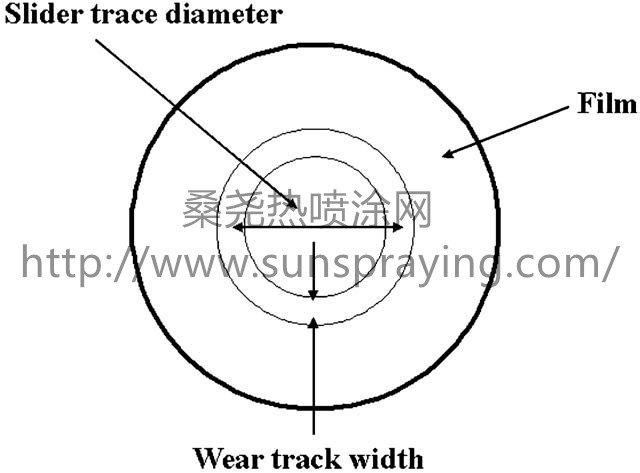Nanoscale materials have been synthesized only recently and their strengthening mechanisms are not well understood. For example, the applicability of the Hall–Petch relationship, which relates grain size to yield properties, is a subject of controversy. Despite these complexities and the lack of a full understanding of the mechanical behavior, it is important to initiate studies on the friction and wear characteristics of nano layered structures because of the perceived potential engineering applications of these materials as tribological surface coatings. It can be expected that microstructural refinement should lead to an improvement in the wear resistance. Ceramic coatings such as aluminumoxide, titaniumnitride, silicon carbide, silicon nitride and zirconium oxide have been studied extensively for their tribological properties over the past two decades. Hard ceramic coatings exhibit high hardness, highmelting point and extreme chemical stability.They provide low wear and are generally capable of sustaining heavy loads, high speeds and high temperatures for extended periods without any deterioration in performance. Ceramic coatings have been used extensively in industry in the recent years. For example, Al2O3 coatings are used in various applications such as gas bearings, electrical insulation and thin film structures of magnetic heads for tape and disc drives. In particular, TiN has received considerable attention as a wear resistant coating for cutting and forming tools such as drill bits and saws. Because of its excellent lubricity and tendency to reduce friction, TiN coatings are being used for extrusion and drawing dies and injection molds. In view of their high hardness and resistance to erosion and wear as well as to corrosion, TiN coatings are being considered for application in gas turbine engine components to provide erosion resistance, thereby extending their useful lifetime. A major disadvantage of monolithic ceramic coatings is their brittleness (low toughness) and their tendency to fracture during wear when a critical contact load is exceeded. The dominant failure mechanism in these cases is by the initiation and propagation of lateral cracks which ultimately result in spalling or delamination of the coating. However, subsurface damage, plastic deformation and grooving are also observed, to a limited degree during sliding wear of ceramics, despite their brittleness. Modern production techniques allow the toughening of ceramic coatings by incorporating alternating metallic and ceramic layers to combine the effects of the high strength of ceramics with the ductility of the metallic layers. Unfortunately, only a limited number of publications on the friction and wear of laminated composites are available in the open literature. Alpas et al. found that, in the sliding wear of laminated composites of copper/amorphous Ni78Si10B12 metallic glass, the wear resistance increases with increasing volume fraction of the metallic glass. Their experiments confirmed that the amorphous layers were effective in increasing the wear resistance of the composite by supporting the load with less deformation and by obstructing the damage process initiated in copper layers. Ruff and Lash more found that metal/metal multilayered composites of copper and nickel offered substantially increased resistance to sliding wear when compared to monolithic copper and nickel. Coefficients of friction of the multilayer composites were intermediate between the coefficients of friction for copper and nickel. Wear tests performed on gold/molybdenum and gold/stainless steel by Courtridge et al. showed that decreasing the gold layer thickness resulted in a decrease in wear rate. The study also found that the alternate layers of Au/ Mo did not wear by gradual wearing of successive layers, but rather by delamination in underlying layers as a result of plastic deformation and fracture at the interfaces. Norose et al. prepared metal/metal laminates by depositing thin plates of metal A andmetal B. As a result ofwear experiments carried out on 33 metal combinations rubbed against pure Fe and pure Cu, they found that laminated composites consistently exhibited higher wear resistance than the pure metals. More recently, nanoscale Al/SiC composites have been synthesized and characterized and found to have superior mechanical properties over conventional laminates. Pauleau et al. found that nanostructured Cu/C laminates exhibit coefficient of friction that is significantly lower than that of diamond-like carbon films (DLC). Others have fabricated ceramic/ceramic laminates and found that the composites have improved wear and friction properties.

本文由桑尧热喷涂网收集整理。本站文章未经允许不得转载;如欲转载请注明出处,北京桑尧科技开发有限公司网址:http://www.sunspraying.com/
|

